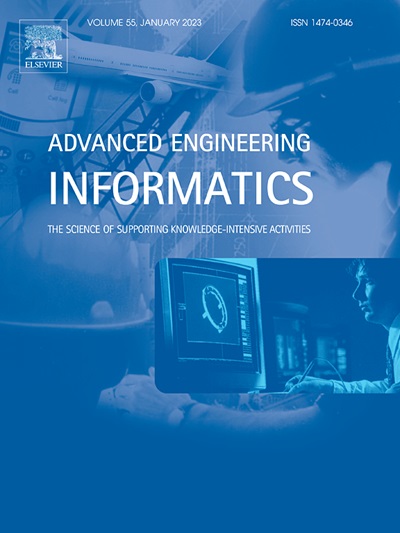Reinforcement learning-based fuzzy controller for autonomous guided vehicle path tracking
IF 8
1区 工程技术
Q1 COMPUTER SCIENCE, ARTIFICIAL INTELLIGENCE
引用次数: 0
Abstract
Automated guided vehicles (AGVs) play a critical role in connecting the entire production line. A fully automated AGV must perform four functions, namely simultaneous localization and mapping (SLAM), positioning, routing, and path tracking. In the present study, Hector SLAM, adaptive Monte Carlo localization, and Anytime Repairing A* were used to perform SLAM, localization, and path planning functions, respectively. For path tracking, a fuzzy proximal policy optimization (FPPO) controller was created by applying fuzzy control theory and incorporating reinforcement learning to improve the accuracy of the fuzzy controller’s output. Currently, extensive experience is required to manually design fuzzy rules and membership functions; an inappropriate design can lead to low control precision and poor dynamic system quality. The experimental results in both virtual and real environments demonstrated that the FPPO controller reduced both maximum and mean path tracking errors to a considerably greater extent than did a conventional fuzzy controller. In the virtual environment, the average tracking error for the circular trajectory decreased from 0.05 to 0.02 m, the U-shaped trajectory error decreased from 0.02 to 0.01 m, and the right-angle trajectory error decreased from 0.02 to 0.01 m, highlighting the FPPO controller’s high precision and stability. Similarly, in a real environment, the average tracking error for the circular trajectory decreased from 0.05 to 0.02 m, the U-shaped trajectory error decreased from 0.03 to 0.01 m, and the right-angle trajectory error decreased from 0.02 to 0.01 m. These results indicate that the FPPO controller exhibits exceptional adaptability and reliability across various path types. The FPPO controller overcomes this shortcoming by integrating reinforcement learning to optimize the fuzzy control; the method also provides a self-learning ability to the AGV. By comparison with a conventional fuzzy controller, the FPPO controller was demonstrated to improve the AGV’s path tracking ability.
求助全文
约1分钟内获得全文
求助全文
来源期刊

Advanced Engineering Informatics
工程技术-工程:综合
CiteScore
12.40
自引率
18.20%
发文量
292
审稿时长
45 days
期刊介绍:
Advanced Engineering Informatics is an international Journal that solicits research papers with an emphasis on 'knowledge' and 'engineering applications'. The Journal seeks original papers that report progress in applying methods of engineering informatics. These papers should have engineering relevance and help provide a scientific base for more reliable, spontaneous, and creative engineering decision-making. Additionally, papers should demonstrate the science of supporting knowledge-intensive engineering tasks and validate the generality, power, and scalability of new methods through rigorous evaluation, preferably both qualitatively and quantitatively. Abstracting and indexing for Advanced Engineering Informatics include Science Citation Index Expanded, Scopus and INSPEC.
 求助内容:
求助内容: 应助结果提醒方式:
应助结果提醒方式:


